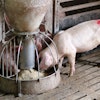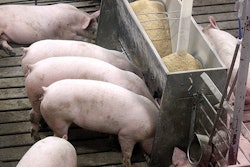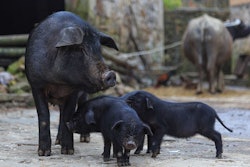
Snipers deployed to shoot wild boar along border between North, South Korea
There have been new outbreaks of African swine fever (ASF) in three Asian states over the past week, according the respective countries’ animal health agencies. In South Korea, the military and civilians are being deployed to shoot wild boar in a high-risk area near its northern border.
As the number of wild boar known to be infected with the ASF virus reaches nine, the Republic of Korea is employing more intense measures to stop the disease spreading. All the infected animals have been detected in the forest area of the Demilitarized Zone that forms the border with North Korea, where ASF is believed to be widespread.
Among the measures used by South Korea is the deployment of snipers to shoot wild boar in the area, reports South China Morning Post. Around 900 soldiers and civilians have been mobilized to hunt down the wild boar, according to news agency Yonhap. There have also been a series of 48-hour standstills, when all movements are halted between pig farms, slaughterhouses and feed mills.
Further details of the most recent ASF outbreak at a farm in South Korea are recorded in the latest report from the agriculture ministry to the World Organisation for Animal Health (OIE). In the latest outbreak — the 14th affecting a farm — four animals showed symptoms of the disease at a farm in Yeoncheon last week. All 4,000 pigs were culled after the infection was confirmed. No further cases on farm have been confirmed since that time.
So far, all the ASF reported in South Korea have been in the northern border province of Gyeonggi. The ASF virus has not been detected in two further suspected outbreaks — one in Yeoncheon, and one much further south in North Jeolla province, reports Yonhap.
Two new outbreaks in China
After a month without new reports of ASF cases, official sources report two new outbreaks in China.
The first was confirmed one week ago by the agriculture ministry, and involved a herd of 287 pigs belonging to a farming cooperative in Puma, which is in the Dingxi city region of Gansu province. The majority of the animals died as a result of the infection.
Two days later, the ministry reported that 48 live pigs and 9 dead animals were found to be infected with ASF. They were found after two vehicles were stopped by the authorities on an expressway in Yulin city, in Guangxi Zhuang Autonomous Region.
ASF outbreaks continue in the Philippines
While no follow-up reports of new ASF outbreaks have been presented by the Philippines’ animal health agency to the OIE, the disease continues to be confirmed in further pig herds, according to local media.
Most recently, the disease was found to be the cause of death of a group of 31 pigs in the county of Cavite, reported ABS-CBN. Authorities were in the process of culling 2,000 more pigs within one kilometer of the outbreak. Elsewhere on the island of Luzon, another district of Quezon City has been affected by the disease.
According to a further report from the same source, some local authorities are running out of funds to compensate pig-keepers for animals that are culled to halt the spread of ASF. As a result, not all culls are being completed.
In Vietnam, ASF has led to an 8% reduction in pork output for the first nine months of this year, according to Vietnam News. The government reports significant increases in the nation’s output of other meats.
This week, it was reported that a passenger had been denied entry to Australia. The woman was from Vietnam, and attempted to bring into the country various raw meat products — including pork — in her luggage. Aware of the rapid spread of the ASF virus within Asia, Australian authorities have stepped up their efforts to keep out the disease.
View our continuing coverage of the African swine fever outbreak.


















